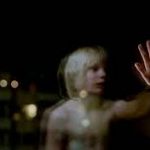
Video games are the bomb. I stay up far too late playing them, I play all levels to get to 100% completion, I throw the controller, and I refer to the bosses by such cute little nicknames like, “You fucking shitstain” and “GODDAMMITDIEALREADY!” (The kids have been sworn never to repeat what they hear me yell some evenings. What happens in Zelda stays in Zelda.) So, naturally, when a movie comes out that’s based on a video game, I’m torn between one of two reactions:
-
This is going to be sweet! I’ve been saying all along that this needs to be a movie!
-
Oh good Christ, how are they going to fuck this one up?
The trailer of Silent Hill gave me the first reaction. It didn’t take too long into the film to realize that I had been suckered in and was in the midst of a third, much more horrifying reaction: “This had so much potential. It looked good. How do you manage to completely fuck up something that was goddamned scripted out in a successful format already?!” Let’s examine how this one managed to completely screw the pooch.
#1 – It tries too hard to function like a video game
Building atmosphere is one thing. Multiple lengthy shots of your main character wandering through town just makes everything drag. It felt like I could have put the movie down, walked away, went on with my life, and picked it back up again hours or even days later. I get it; the town’s creepy. I don’t need to watch Radha Mitchell stroll through every corner of town in order to find her daughter. Speaking of which…
 |
| This movie is as exciting as watching snow fall. Or watching falling ashes. Take your pick. |
#2 – I never want to hear the name Sharon ever again
Never. EVER. A good 85% of the lines in this movie consist of Rose uttering some version her daughter’s name. Fuck me, I can’t even bring myself to type it again. She yells it, she whispers it, she calmly states it. You know how some people can’t stand the name of an ex and instinctively grit their teeth when they hear it? Yeah, that’s how I feel about this name now.
#3 – I should not be this bored 20 minutes into a horror movie
I was bored when I checked the timer again at the 30-minute mark. And ten minutes after that. And for the rest of the two fucking hours this movie went on. There were supposed to be scares and chills in there. They fell flat. It’s mildly creepy, but it could have gone so much further. While I don’t mind a lack of extreme gore, this one just gave me a whole lot of nothing. By the time the chick gets stripped and flayed by Pyramid Head (over an hour into runtime, mind you), I was cheering because I wanted this movie to give me something. Anything. This is a warning as to why you should be careful with pacing and atmosphere. Relying too heavily on them makes for one long ass ride. By the time we got to the barbed wire gynecological exam from hell, I was too bored to give a shit.
#4 – The characters were one-dimensional
Fine, I’ll say it: Pyramid Head was not scary because the character was completely fucking flat (flat pyramid, get it? No? Is this thing on?). It has nothing to do with lack of speech. He’s not the same style silent killing machine as Kiriyama from Battle Royale. Kiriyama was effective because we had two things: a tiny shred of backstory, and a look of sheer joy in the kill. We didn’t get that from Pyramid Head. We also didn’t get anything in the way of Christabella or Rose. One was a zealot with blind obedience from her congregation, the other was a reckless mother. I don’t understand how anyone would follow either one of them in their quests. I didn’t root for either one of them, I didn’t fully understand their motives, and I certainly did not have enough knowledge of them to really connect in any way, shape or form. They were drawings of people. No wonder I was so bored.
 |
| Are you ready to ROCK, Silent Hill?! |
#5 – There’s not a ton of music
Silence is not always golden. I get a pun (Silent Hill – get it?), but this one goes too far. You don’t realize how important music is until you don’t have it anymore (YOU HEAR THAT, LAWMAKERS THAT WANT TO CUT ARTS SPENDING?). All gray with little to no music in most parts makes for a medium that does not fully connect with my emotions. I had no fear stirred up because there was nothing helping to build that fear along. I can get plenty scared with the right combination of strings and tempo. Makes me wonder how far this could have gone with the right soundtrack.
#6 – The hell is with Laurie Holden’s makeup?
You have blood running down your face, yet the rest of your makeup is perfect. Apparently, a woman can’t be a strong figure without the perfect shade of lipstick. Now I will admit that Laurie Holden is a lovely lady (and the costume was rather kind), but do we have to make sure that our leading ladies are picture-perfect? Even Radha Mitchell didn’t look as bad as she could have. I don’t want a pretty heroine. I want a real one. That means that she shouldn’t look like she’s had touch-ups between crises. You know what real women do when the shit hits the fan? They deal with it. They don’t make sure that they have a fresh coat of lipstick on.
 |
| To be honest, I was looking for an excuse to post this picture. |
#7 – The script was a poor attempt to try to make a strong female character the lead
We do need more strong female characters in cinema. This one didn’t bother to give us any form of depth or connection, and so the strong lead fell flat. Want to know when we found out that Cybil stayed with an injured kid for three days in a mine shaft? An hour and fifteen minutes into the movie. About five minutes before she died. Not enough time to form the connection. As for Rose, the character rode on cliche after cliche. A mother’s love is powerful, you’ll move mountains for your child, blah blah blah. Tell me something new. Make the character deeper. This one didn’t bring anything to the table other than the motherhood card. Give us something more than a recycled trope and you’ll have us.
What really hurt with this one is the knowledge that the game had a male character in the lead. It was changed to a female lead for the film, so I should have been happy. This was a good thing – a girl got into the club! Instead, this one fell so flat that it made the creative decision even worse. Women deserve more than the treatment they got in this film. Is motherhood a powerful facet to a female identity? When done correctly, sure. However, not all women want to become mothers. And that’s perfectly fine. It felt like this film was reinforcing that only motherhood will make you move mountains, which is simply not true. I know plenty of women who aren’t mothers that would give anything to save a friend, lover, pet, book, piece of music, you name it. Women can get passionate about anything. It’s not solely about children, so please, stop treating your female audience like the only thing we can connect with is a child in danger. While I get that the plot involved a child in danger, it felt like it was laid on too thick, and it pandered to the easy way out: mommy will always save her baby. A creative mind would have found a better angle.
#8 – This place is so fundamentalist it hurts
True exchange at home:
Hubs: “Why was the starting point of that hopscotch board Hell?”
Me: “Because they’re in West Virginia.”
That’s really not fair to the residents of West Virginia. The town is so over-the-top fundy that I’m choking on the stench. Really, there’s only one illegitimate kid in town, and she was sacrificed by a cult? The biblical quotes all over town, the witch burnings – they’re stacked on so high that it morphs into overkill. At one point, I half expected to hear the Monty Python exchange of, “What do you burn apart from witches?””MORE WITCHES!” It’s a good thing that Sharon wasn’t adopted by a pair of power lesbians. Christabella couldn’t handle out-of-wedlock kids; I can’t imagine how badly same sex couples would have broken her brain.
#9 – Officer Gucci
Did we really need to have the cop that guided Christopher around the town also be the one that tried to help Alessa all those years ago? It felt too convenient and contrived. We had a chance for either a bigger player in the film or another body to add to the count of a horror movie. Missed opportunities, people.
#10 – The logistics of the Sharon/Alessa divide
How does someone incarnate the vestiges of their innocence in the form of a baby a good two decades after receiving third-degree burns over 100% of her body? Why wait that long? Did they really expect me to believe that the baby was delivered to the orphanage by the demon kid? Isn’t there some sort of radius on how far that kid can travel outside of town? I didn’t buy the explanation.
 |
| You waited HOW long to split your personality into archetypal roles? |
#11 – The whole burning thing
Can someone please explain to me why a little girl with 100% of her body covered in third degree burns is still alive while Cybil charred up and died in no time flat?
#12 – The alternate reality ending
My biggest problem with this is the way that Rose came into her house, covered in blood, and just plopped herself down on a comfy chair to stare absent-mindedly at the couch. I don’t know about you, but when I’ve just fought hell beasts and cult members, I like to take a fucking shower when it’s all over. “Hey, Sharon, do me a favor. Watch something on t.v. Mommy needs a good 30-minute soak.” You know, come to think of it, a shower would have been far more compelling and well-structured than this film…
And, finally…
#13 – Sean Bean didn’t die at the end
Really, where’s the fun in that?




































